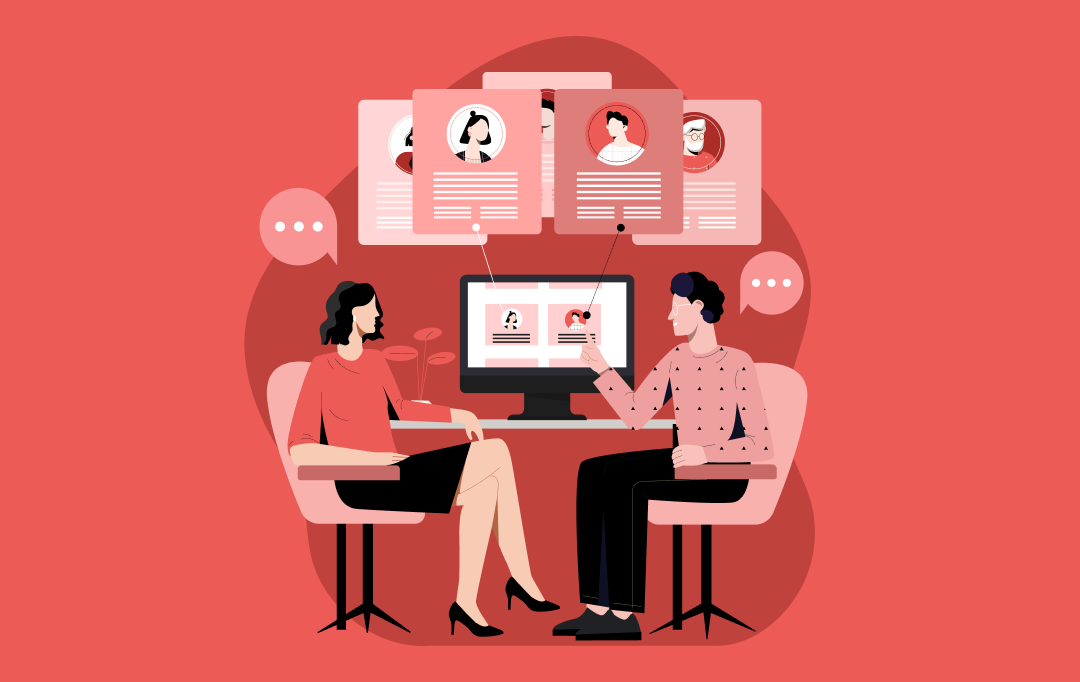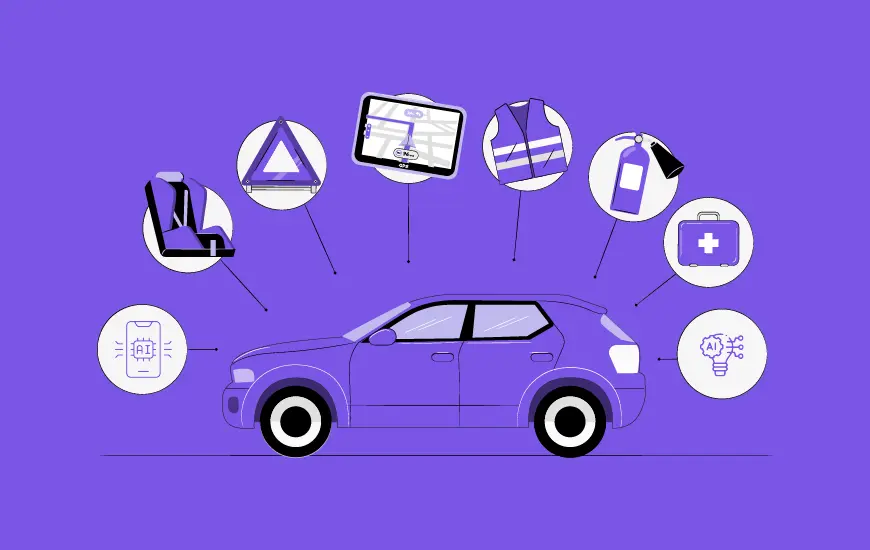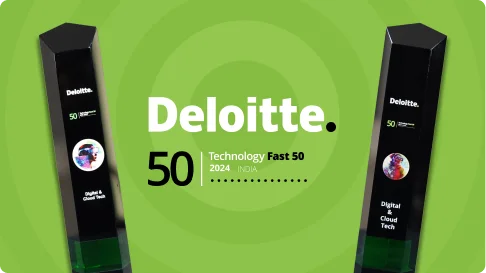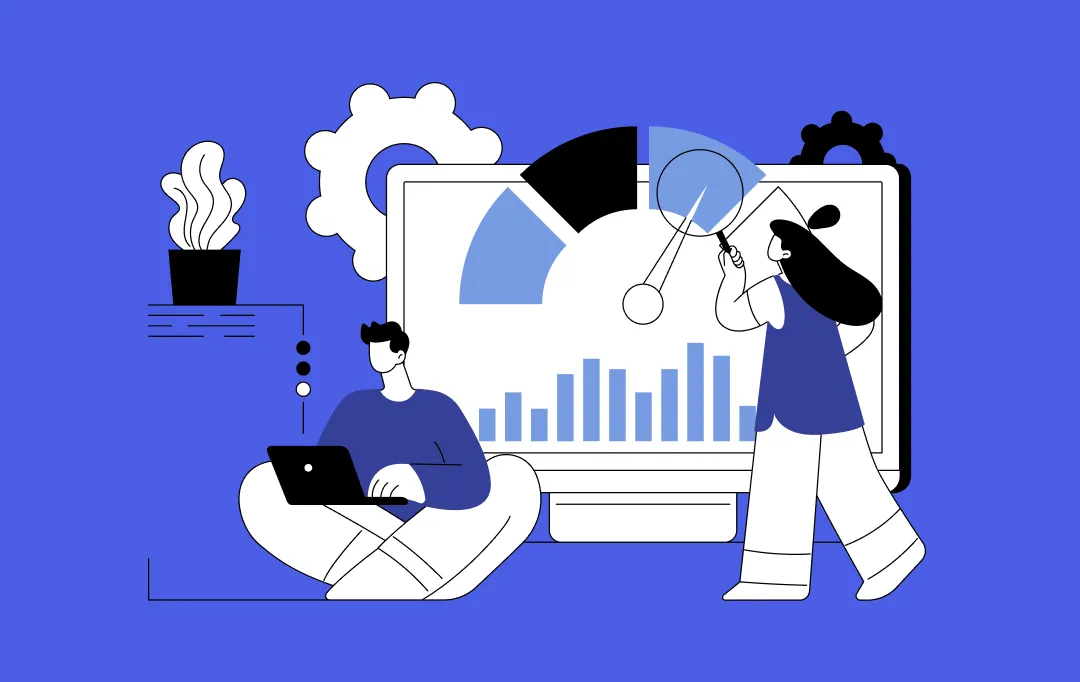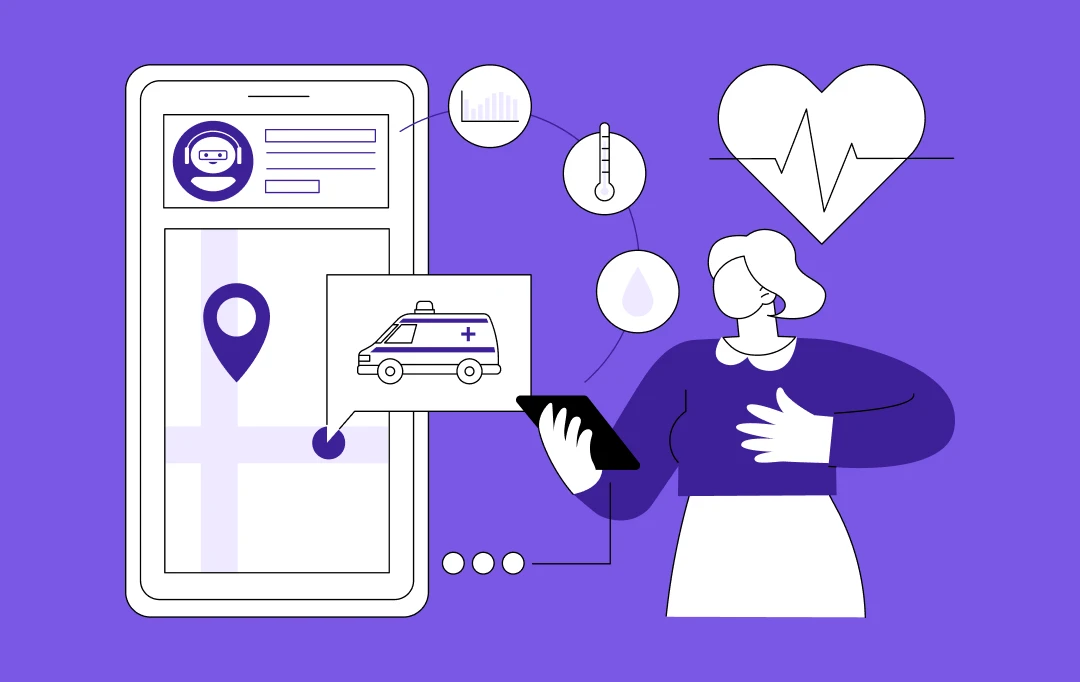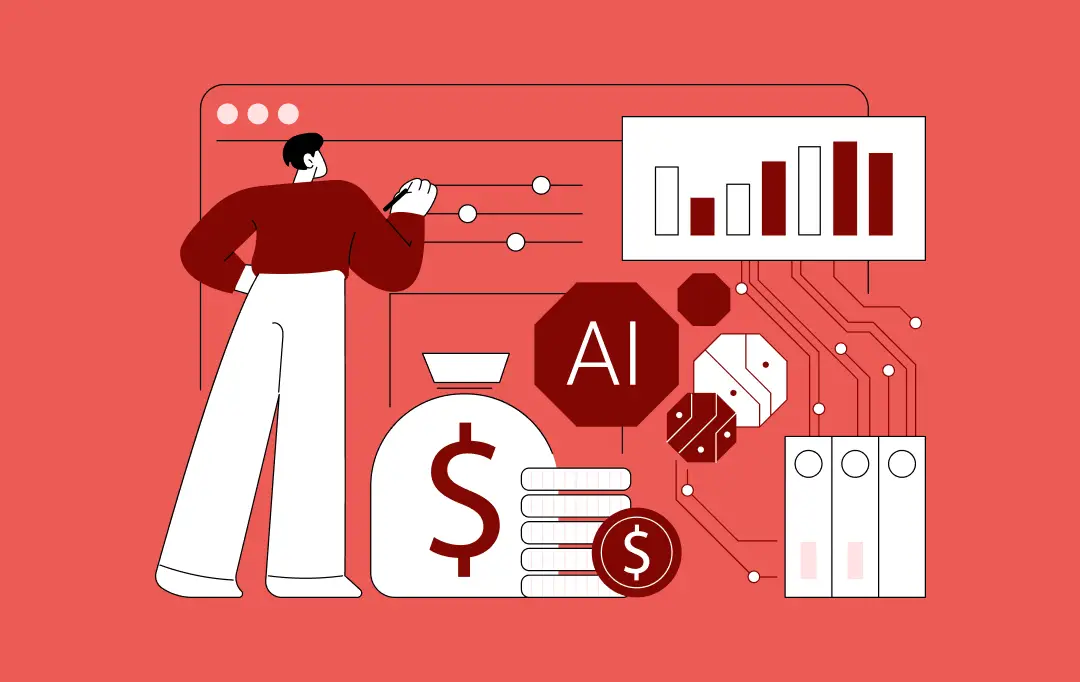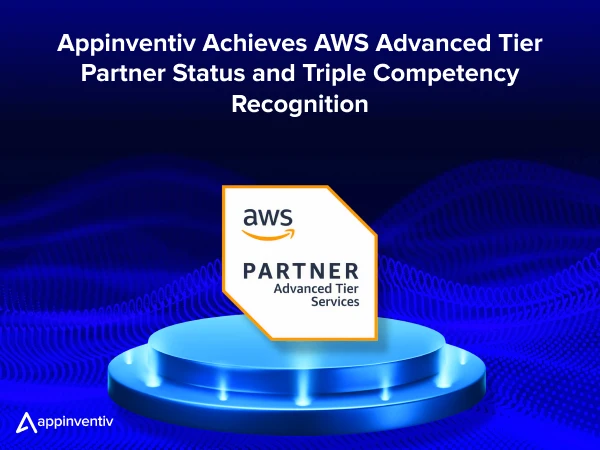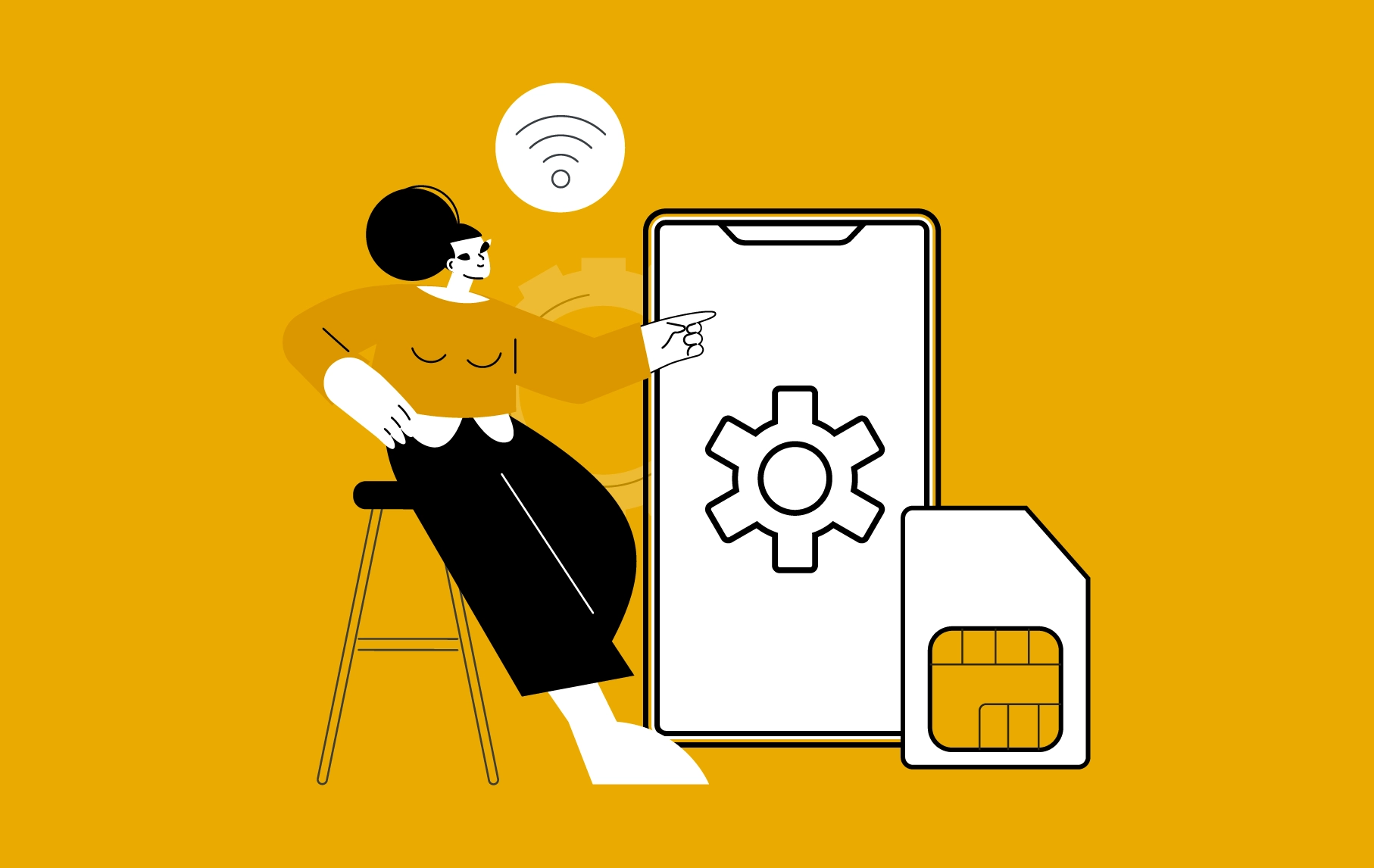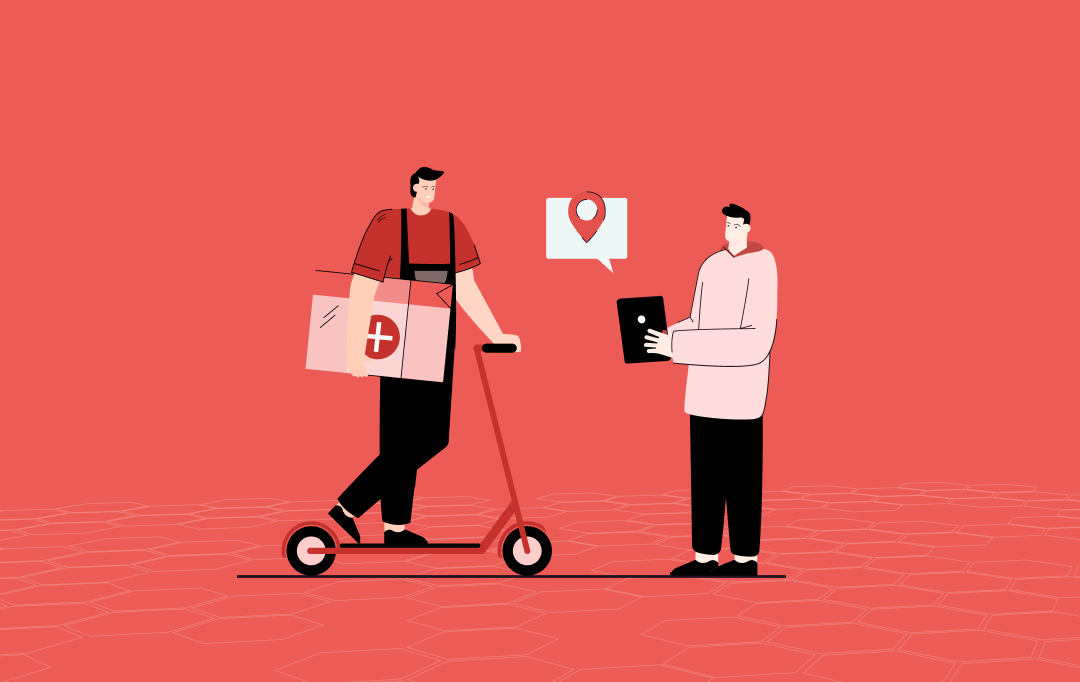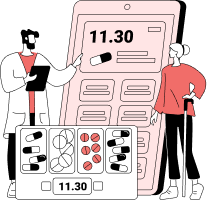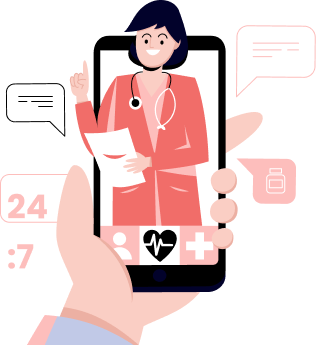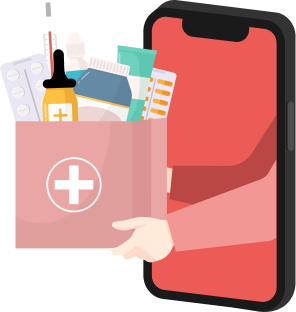- Medical Courier App: Market Overview
- Why Is the Demand for Medical Courier Apps Growing?
- How to Build a Medical Courier App
- Market Research and Define Objectives
- Define Key Features
- Choose the Right Technology Stack
- Design an Intuitive and User-Friendly UI/UX
- App Development and Testing
- Define a Monetization Strategy
- Launch, Maintain, and Scale the App
- Medical Courier App Development: Key Features
- Customer Panel Features (Patients, Clinics, Labs, and Pharmacies)
- Courier & Pharmacist Panel (Drivers & Delivery Personnel)
- Admin Panel (Logistics & Operations Management)
- AI-Powered Future-Ready Features
- Medical Courier App Development Cost
- Cost Analysis Based on App Complexity
- Cost Analysis Based on App Development Stages
- Quick Formula to Estimate Medical Courier App Development Cost
- How Long Does it Take to Build a Medical Courier App?
- Key Factors Affecting the Cost to Build a Medical Courier App
- UI/UX Design Complexity
- Backend Development
- Third-Party Integrations
- Platform Selection
- Advanced Technologies
- Hidden Costs for App Development
- Evolving Tech & Industry Standards
- App Store Optimization (ASO) & Launch Prep
- Ongoing Maintenance & Support
- Server & Infrastructure Costs
- Legal, Licensing & Compliance Fees
- Strategies to Optimize the Cost of Your Medical Courier App Development
- Develop an MVP (Minimum Viable Product)
- Prioritize Mission-Critical Features
- Leverage Open-Source Tools
- Opt for a Dedicated Development Team
- Choose Cross-Platform Development
- Agile Development Practices
- How To Monetize Your Medical Courier App
- What are the Challenges in Building Medical Courier Apps?
- The Medical Industry’s Requirements
- Temperature Control and Cold Chain Management
- Security and Authentication
- Scalability and Performance
- Why Choose Appinventiv to Build Your Custom Medical Courier App?
- FAQs
Speed and precision are non-negotiable in the healthcare industry, where every second counts. Delays disrupt healthcare operations and can put lives at risk, especially when transporting medical supplies, medicines, equipment, and diagnostic samples. However, medical deliveries are far more complex than medicine delivery services.
Medicine delivery apps often fall short when handling sensitive and time-critical medical equipment and supplies. Medical items frequently need special handling, such as temperature control for particular items. That’s where you need assistance with an online medical courier app development. Here’s how it helps healthcare businesses and hospitals:
- Scalability and flexibility: Custom applications can scale to meet the requirements of small clinics or large hospital networks, corresponding to the demand for fluctuations during emergency or peak times.
- Ensure Real-Time Tracking: They offer a reliable solution with GPS tracking, automated routing, and secure proof of delivery to ensure all items arrive on time and within regulatory standards.
- Cost Optimization: Medical courier apps lower transportation charges by optimizing routes and reducing transport mistakes.
- Data Analytics for Decision-Making: Medical Courier Apps collect records on shipping instances, charges, and overall performance, allowing hospitals to perceive bottlenecks and optimize logistics approaches.
The demand for efficient and reliable delivery solutions is growing as the medical courier market is projected to hit $16.23 billion by 2032.
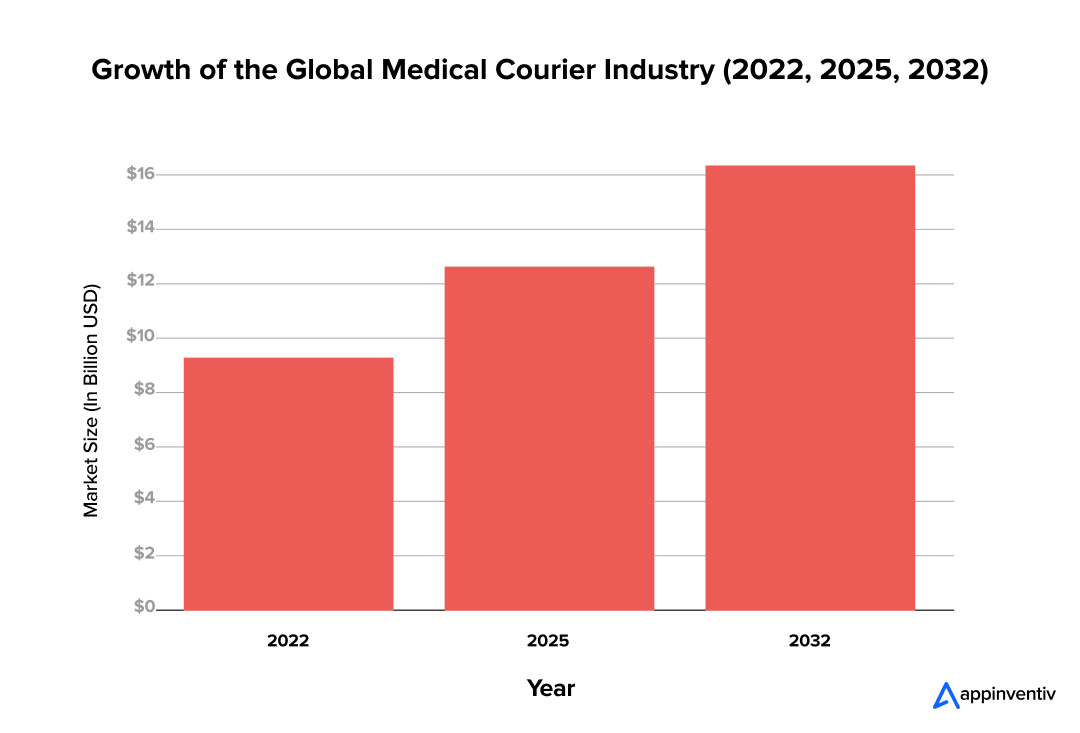
This rapid market expansion emphasizes the critical need for healthcare organizations and providers to invest in online medical courier app development. Top healthcare companies build custom medical courier apps to capitalize on this growth, ensuring faster, compatible, and economical delivery of supplies and medical specimens.
But how to build a medical courier app? Let’s explore the steps to build a medical courier app, the advanced medical courier app development features, and the cost to build a medical courier app that meets the specific needs of your healthcare business.
Build a custom medical courier app and seize a share of the industry by 2032.
Medical Courier App: Market Overview
The medical courier industry is undergoing a major transformation, driven by the increasing demand for faster, safer, and more efficient transportation of healthcare supplies.
Whether delivering lab samples, prescription medications, or life-saving medical equipment, healthcare organizations are moving toward digital solutions that streamline logistics, enhance compliance, and improve patient care.
Why Is the Demand for Medical Courier Apps Growing?
- The rise of telemedicine and home healthcare: With more patients receiving treatment at home, the demand for on-demand medication and diagnostic kit deliveries has surged.
- Strict regulatory requirements: Compliance with HIPAA, FDA, and CLIA mandates secure and traceable medical shipments, making technology-driven logistics essential.
- Technological advancements in healthcare delivery: Features like AI-powered route optimization, IoT-based temperature monitoring, and real-time GPS tracking are revolutionizing medical courier services, ensuring timely and compliant deliveries.
How to Build a Medical Courier App
To build a custom medical courier app, you must determine how users interact with it. Before we discuss the development steps, let’s examine the typical user flow.
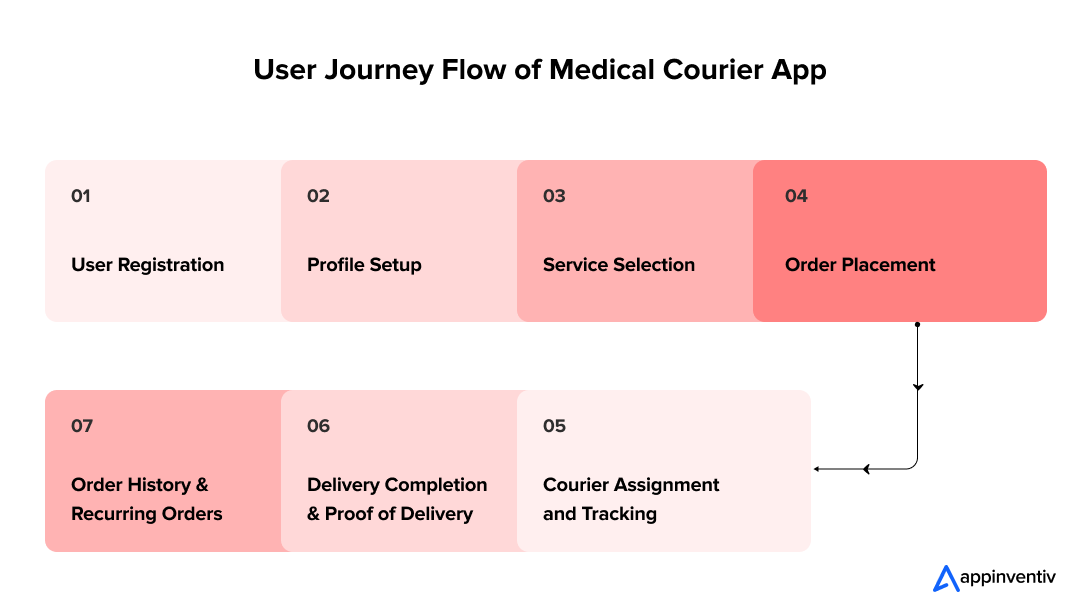 Now that we’ve mapped out the user journey, let’s dive into how to build a medical courier app.
Now that we’ve mapped out the user journey, let’s dive into how to build a medical courier app.
Market Research and Define Objectives
Defining your goals and target audience before the on-demand medical courier app development begins.
- Who will use the app? Will it cater to hospitals, pharmacies, diagnostic labs, or independent courier providers?
- What are the major pain points? Are you focusing on faster deliveries, compliance tracking, cost reduction, or better route optimization?
- What regulations apply? Your app must comply with HIPAA (patient data security), FDA (medical supplies), and CLIA (lab specimen handling) guidelines. For instance, building a HIPAA-compliant app for medical supplies delivery.
- What is the impact of medical courier apps in healthcare logistics? Improve efficiency, reduce errors, and enhance shipment transparency.
Pro Tip: Study competitors offering on-demand medical courier app development solutions. What are their strengths? Where do they fall short? This will help design the app’s core features that solve real workflow challenges rather than just digitizing the process.
Define Key Features
You must identify and integrate the specific needs of pharmacists, administrators, and customers. Each group interacts with the app differently:
- Pharmacists & Medical Suppliers need real-time tracking, automated inventory updates, and secure delivery confirmations.
- Administrators & Healthcare Providers require a centralized dashboard for managing multiple deliveries.
- Users expect seamless scheduling, live tracking, and digital proof of delivery.
Beyond delivery logistics, inventory management is essential. Efficient inventory tracking prevents delays and optimizes stock levels for pharmacies and healthcare providers.
Pro Tip: Start with an MVP (Minimum Viable Product) by focusing on essential features that solve industry pain points, then scale based on user feedback.
Choose the Right Technology Stack
Select a technology stack that emphasizes scalability, security, and seamless performance. For example, React Native or Flutter for cross-platform app development, Node.js for reliable server-side operations, Twilio for real-time notifications, and secure API development for payment gateways and map integration.
Pro Tip: Choose a flexible tech stack that supports future integrations, such as blockchain for tamper-proof tracking and AI-driven predictive analytics.
Design an Intuitive and User-Friendly UI/UX
Since medical deliveries are often urgent, the app must be easy to navigate, mobile-friendly, and highly responsive, ensuring quick scheduling and tracking of orders. Here are some key considerations:
- Minimize steps to schedule a medical delivery
- Interactive maps with live location updates
- Instant updates on order confirmations, dispatch status, and delivery completion.
Pro Tip: Before finalizing the design, develop a clickable prototype and gather feedback to ensure usability meets real-world needs.
App Development and Testing
With the design finalized, it’s time to bring the app to life through structured development and comprehensive quality assurance (QA). No medical courier application development is complete without rigorous testing to ensure seamless performance.
From unit testing to identifying functionality gaps to compliance audits that verify adherence to industry standards, a well-executed QA strategy helps catch issues before they impact real users. AI in Quality Assurance is the next big thing in automation testing. Leverage manual and AI-powered testing to automate bug detection, improve accuracy, and speed up deployments.
Pro Tip: Don’t forget to conduct load testing to assess how the app handles peak delivery requests.
Define a Monetization Strategy
A smart monetization strategy keeps your medical courier app profitable and accessible. You can offer a pay-per-use model for pharmacies and clinics that need occasional deliveries or a subscription plan for hospitals and labs with regular shipments. Partnering with advanced health tech companies can also create a steady revenue stream by integrating courier services into their operations.
Pro Tip: Research competitor pricing and user preferences to find the right balance between affordability and profitability.
Launch, Maintain, and Scale the App
Launching your medical courier app is just the start—keeping it efficient and reliable requires ongoing support and updates. A dedicated support team will ensure healthcare providers and couriers receive timely assistance, preventing delivery disruptions.
Pro Tip: Schedule regular security audits and performance updates.
Medical Courier App Development: Key Features
Now that you know the medical courier app development process, here are some key medical courier app development features you should not miss adding to your application. Also, it’s not just about adding features—it’s about ensuring seamless coordination between healthcare providers, couriers, and administrators. So, let’s look at how each can use different features effectively.
Customer Panel Features (Patients, Clinics, Labs, and Pharmacies)
- Easy Order Placement: Patients can order medicines and track prescriptions, while hospitals and pharmacies can schedule pickups.
- Real-Time Tracking & Notifications: Keep patients and healthcare providers updated with live ETAs, route tracking, and status updates on their deliveries.
- Urgent & Scheduled Deliveries: Patients can request on-demand medical deliveries, while hospitals can schedule recurring pickups for lab samples and essential supplies.
- Barcode and QR Code Verification: Reduce errors by allowing users to scan and confirm that they are receiving the correct medication or medical supplies.
- Temperature-Controlled Delivery Requests: Ensure sensitive medicines, vaccines, or lab samples maintain proper storage conditions throughout transit.
Courier & Pharmacist Panel (Drivers & Delivery Personnel)
- Quick Access to Delivery Requests: Instantly view, accept, or decline delivery tasks.
- Accurate Pickup & Drop-Off Details: verified addresses, recipient information, and special handling instructions.
- Live Updates & Alerts: Instant notifications for new orders, cancellations, or rerouted deliveries to adjust schedules without delays.
Admin Panel (Logistics & Operations Management)
- Performance Analytics & Reporting: Insights into delivery efficiency, driver performance, and cost trends to optimize operations and cut unnecessary expenses.
- Data Security & Compliance: Data is safe with HIPAA-compliant encryption and strict access controls.
- Analytics Dashboard: Real-time data analytics in healthcare drive insights on deliveries, costs, driver performance, and customer feedback to improve efficiency.
- Inventory & Medication Tracking: Monitor stock levels to prevent shortages and ensure timely restocking.
- Billing & Revenue Management: Automate payments and pricing based on distance, urgency, and package type for transparent transactions.
- Promotions & Discounts: Custom offers and loyalty rewards to retain pharmacy and hospital clients.
- Complaint Resolution: Quickly handle delivery issues, delays, or missing packages with real-time tracking.
AI-Powered Future-Ready Features
Your medical courier app must go beyond the basics to outperform your competitors. It should include advanced features like AI, IoT, and automation. Here are a few futuristic features that you can consider:
- Demand Forecasting: AI forecasts delivery spikes based on historical data, seasonal patterns, and local health trends to help pharmacies and labs prepare and schedule resources proactively. For instance, according to Healthcare IT News, Froedtert & Medical College of Wisconsin (USA) leveraged Machine Learning to enhance bed demand forecasting. This further optimized resource allocation and enhanced the level of care.
- AI Chatbot Support: 24/7 automated customer support that instantly handles order queries, delivery tracking, and complaint resolution. For instance, UCHealth developed a conversational AI chatbot named “Livi” that works as a virtual assistant to provide patients with personalized health information on doctors, services, locations, and health topics.
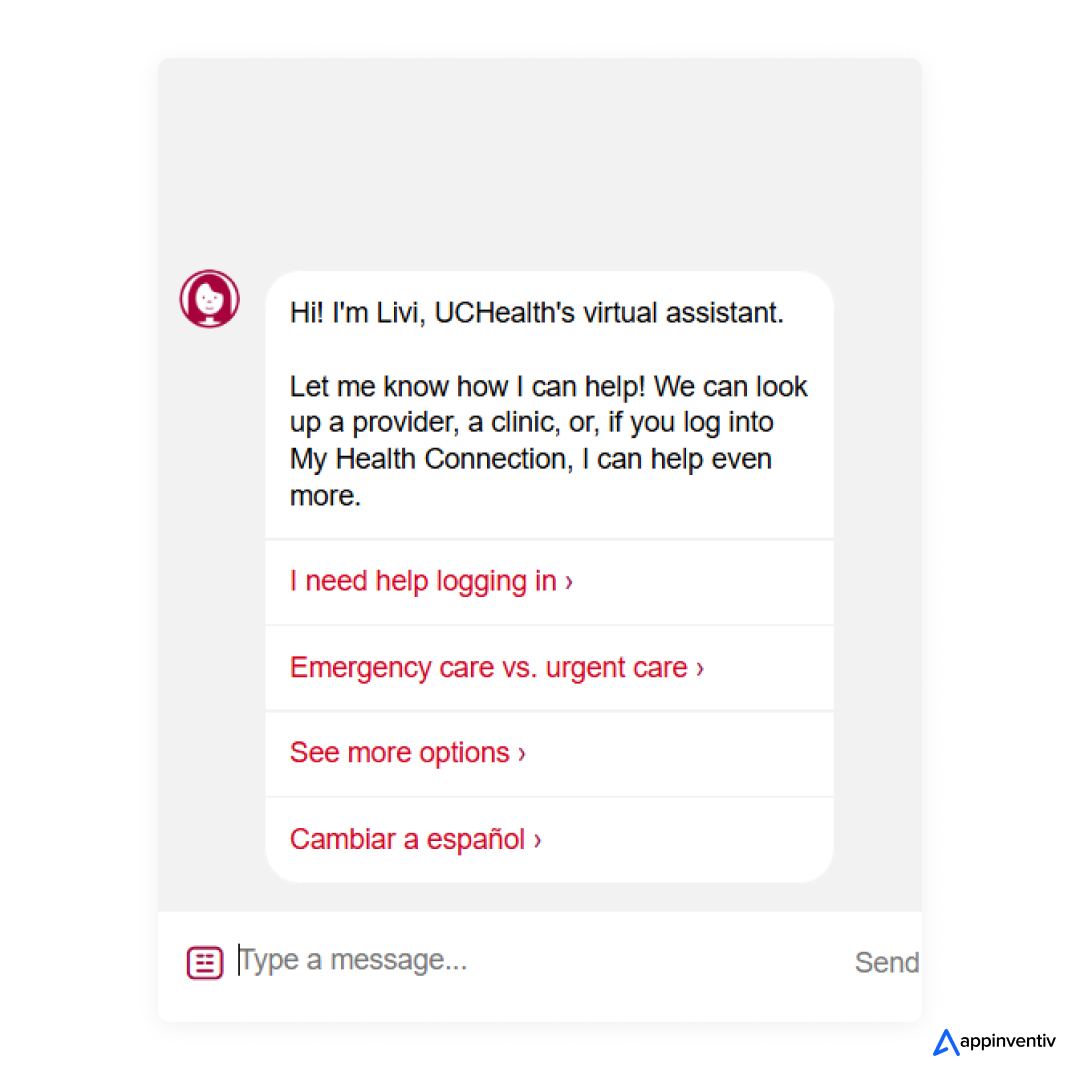
- AI-Based Route Optimization: Leverage real-time traffic, weather, and road condition data to calculate the most efficient delivery routes, reducing fuel costs and ensuring timely medical deliveries, even during emergencies. For example, Sheba Medical Center in Israel implemented AI-driven route and delivery systems. They utilize autonomous delivery robots to transport chemotherapy drugs directly from the pharmacy to nursing stations.
- Auto-Reassignment for Failed Deliveries: In case of a failed pickup or drop-off, the system instantly reassigns the task to the next available courier, minimizing delays without manual intervention.
- Dynamic ETAs Powered by Machine Learning: Use predictive analytics to estimate highly accurate delivery times based on historical delivery data, driver behavior, and location-specific delays. For instance, Greenville Memorial Hospital (GMH), South Carolina, leveraged predictive analytics to optimize its Automated Guided Vehicles (AGVs), which deliver surgical materials to operating rooms. Based on utilization patterns and congestion data, the hospital developed a simulation-optimization model that enhanced AGV routing efficiency.
Medical Courier App Development Cost
Whether creating a Minimum Viable Product (MVP) or developing a fully scalable solution, you must consider factors like compliance with healthcare regulations, app complexity, and technology stack that can affect pricing.
The estimated cost to develop a medical courier app typically ranges from $40,000 to $500,000+.
Let’s examine the cost in detail:
Cost Analysis Based on App Complexity
As your app evolves from a simple delivery tracker to an advanced logistics platform with AI and EHR integrations, so does the cost. Complexity directly impacts the time, tech, and talent required.
| App Complexity | Features Included | Estimated Cost |
|---|---|---|
| Simple | Order placement, real-time tracking, secure logins, push notifications, HIPAA-compliant payments | $40,000 – $100,000 |
| Moderate | Includes simple features + advanced user roles, analytics dashboard, EHR integration | $100,000 – $300,000 |
| Complex | Includes moderate features + AI route optimization, fleet automation, real-time compliance tracking, and multi-platform support | $300,000 – $500,000+ |
Cost Analysis Based on App Development Stages
Every development phase—from planning to post-launch support—adds its costs. Here’s what you can expect at each stage of medical courier app development:
| Development Phase | Activities | Estimated Cost | Time and Effort |
|---|---|---|---|
| Planning | Market research, healthcare licensing, and compliance review | $10,000 – $20,000 | 1-2 months |
| Design | UI/UX design with healthcare user journeys | $20,000 – $50,000 | 2-4 months |
| Development | Frontend, backend, integrations, real-time GPS & analytics | $80,000 – $200,000 | 4-6 months |
| Launch | Go-to-market strategy, platform deployment | $10,000 – $30,000 | 1-2 months |
| Maintenance | Bug fixes, server updates, and regulation compliance checks | $10,000 – $50,000/year | Ongoing, varies annually |
Quick Formula to Estimate Medical Courier App Development Cost
Total Cost to Build a custom Medical Courier App = (Development Hours × Hourly Rate) + Cost of APIs/Compliance + Infrastructure/Misc. Expenses
For example, 1,200 hours × $60/hour = $72,000.
Note: The Hourly rate depends on team location and experience.
How Long Does it Take to Build a Medical Courier App?
Building a robust medical courier app typically takes 9 to 12 months. Simpler versions are faster, while apps with AI-powered logistics, cross-platform support, and real-time analytics require more development time.
Discovery & Planning (2–3 weeks)
This is where it all starts. You define the app’s goals, key features, and compliance needs, like HIPAA. It’s about aligning your vision with what’s technically possible.
UI/UX Design (3–6 weeks)
Designers work on creating a smooth, intuitive experience for patients, couriers, and admins. This could take longer if you use multiple platforms or custom dashboards.
Development (10–20 weeks)
This is the heavy-lifting phase. Developers build a custom medical courier app with the core features—real-time tracking, secure logins, dispatch systems, payments, and compliance tools. The longer it takes, the more features (think route optimization or temp monitoring).
Testing & QA (3–6 weeks)
Once built, it’s time to test everything to ensure it’s bug-free, secure, and works under real-world conditions.
Deployment & Launch (1–2 weeks)
After testing, the app gets prepped for launch. That includes server setup, app store submissions, and last-minute tweaks.
Post-launch Support (Ongoing)
Even after going live, the work doesn’t stop. You’ll need regular updates, bug fixes, and improvements based on user feedback.
Key Factors Affecting the Cost to Build a Medical Courier App
While ascertaining the factors affecting medical courier app development, a mix of regulatory, technical, and business choices will affect your spending on app development. Below are the major cost influencers:
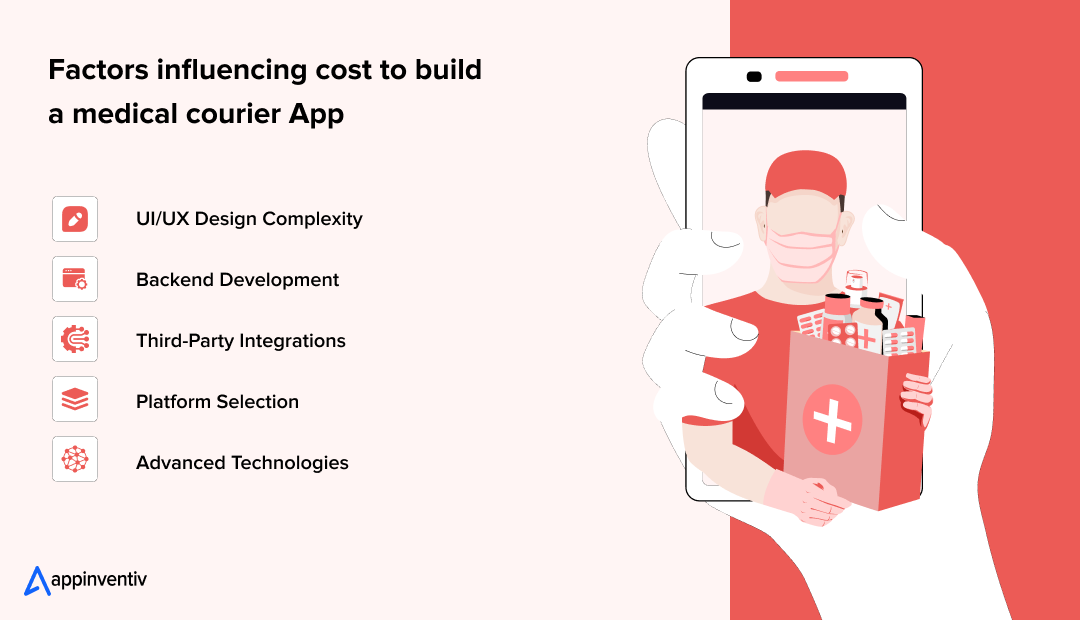
UI/UX Design Complexity
The interface must balance functionality, security, and simplicity, especially for medical staff, patients, and couriers. The more intuitive and customized the design, the higher the cost.
| Aspects | Description | Examples | Cost Impact |
|---|---|---|---|
| Basic Design | Minimalist layouts, standard flows | Pickup & delivery requests with list view | Low ($5,000–$10,000) |
| Moderate Design | Custom UI for roles, responsive layouts | Real-time status, profile pages for labs/hospitals | Medium ($10,000–$20,000) |
| Complex Design | Dashboards, real-time visuals, animations | Courier tracking map, drag-and-drop scheduling | High ($20,000–$50,000+) |
Backend Development
Backend systems handle real-time delivery, patient records, courier assignment, and notifications. The more scalable and secure your mobile backend app development, the more it will cost.
| Components | Description | Examples | Cost Impact |
|---|---|---|---|
| Basic Backend | Basic delivery data & manual input | Manual order updates, basic history logs | Low ($10,000–$20,000) |
| Scalable Backend | API-based, supports growth and concurrency | Auto-updating delivery status, real-time sync | Medium ($20,000–$40,000) |
| Custom Backend | Built for automation and analytics | Smart dispatching, delivery insights dashboard | High ($40,000–$80,000+) |
Third-Party Integrations
These improve functionality but come with licensing and development overheads.
| Integration Types | Purpose | Examples | Cost Impact |
|---|---|---|---|
| Mapping Tools | Courier tracking | Google Maps | $5,000–$15,000 |
| Payment Gateways | Secure transactions | Stripe (HIPAA-compliant) and PayPal | $3,000–$10,000 |
| EHR Systems | Patient data access | Epic, Cerner | $10,000–$25,000 |
| Notification APIs | Real-time alerts | Twilio, Firebase | $2,000–$5,000 |
Platform Selection
Whether you’re building a medicine delivery app for Android, iOS, or both, your chosen platform affects how quickly you can launch, who you can reach, and how much you’ll spend.
For example, a hospital system may require an iOS app for doctors and an Android version for field couriers. If you’re targeting multiple user types (admins, patients, couriers), opting for cross-platform development might save time and cost, though native apps offer better performance and more custom features.
| Platforms | Description | Examples | Cost Impact |
|---|---|---|---|
| Single Platform | iOS or Android only | Courier Android app for internal teams | Low ($20,000–$40,000) |
| Cross-Platform | Shared codebase (e.g., Flutter) | Admin + courier app with one codebase | Medium ($30,000–$60,000) |
| Native | Separate iOS & Android development | Custom courier app + iOS dashboard for doctors | High ($50,000–$100,000+) |
| Testing | Device-level QA and platform-specific fixes | HIPAA compliance testing, real-device courier tracking, iOS/Android bugs | $5,000–$15,000 |
Advanced Technologies
Leveraging AI, ML, and IoT helps automate dispatching, predict delays, and monitor critical deliveries in real time, making your app functional and truly intelligent.
| Technology | Purpose | Examples | Cost Impact |
|---|---|---|---|
| AI Optimization | Smarter routing & load distribution | City guides, maps | $15,000–$40,000 |
| IoT Integration | Live environment data from deliveries | Temperature-controlled medicine tracking via sensors | $20,000–$50,000 |
| Machine Learning | Predictive performance | Delivery ETA based on past traffic patterns | $20,000–$60,000 |
| R&D | Tailored user experiences | Simulating delivery models for new regions | $5,000–$15,000 |
Hidden Costs for App Development
The budget might seem sorted once you’ve accounted for design, development, and testing. But medical courier apps development often includes hidden costs that surface as you scale or go live. Planning for these from the start can save your budget later. We have listed a few of them below:
Evolving Tech & Industry Standards
The healthcare space evolves fast with regulatory updates, user expectations, and new tech advancements all demanding regular adaptation. From AI-driven route optimization to integrating wearables or RFID tags for temperature tracking, staying relevant isn’t a one-time deal.
- Regulatory Tech Updates: $3,000–$7,000/year
- Feature Enhancements (e.g., AI upgrade): $8,000–$25,000/update
- Specialist Consultants (Healthcare IT, AI): $80–$150/hour
App Store Optimization (ASO) & Launch Prep
Even niche apps like medical courier platforms need visibility. ASO helps your app rank better on stores by optimizing descriptions, keywords, and visuals. Meanwhile, launch prep includes demo creation, onboarding guides, and outreach for B2B users like clinics and hospitals.
- ASO Tools & Services: $200–$700/month
- Launch Collateral (demos, pitch decks): $3,000–$7,000
- Onboarding & Training Material: $4,000–$10,000
Ongoing Maintenance & Support
Maintenance includes patching vulnerabilities, rolling out compliance updates, refining performance, and adding new delivery partners or services.
- Compliance & Security Updates: $5,000–$12,000/year
- App Monitoring: $100–$400/month
- Minor Fixes & Tweaks: $2,000–$5,000/quarter
- Emergency Support: $100–$200/hour
Server & Infrastructure Costs
Handling real-time tracking, encrypted patient data, and courier logs needs scalable and secure backend infrastructure. Server loads can spike during health crises or logistics surges, especially for large labs or hospitals managing multiple deliveries.
- HIPAA-Compliant Hosting: $300–$1,000/month
- Scalable Cloud Infrastructure (e.g., AWS, Azure): $1,000–$5,000/month
- Encrypted Data Storage: $200–$800/month
- Backup & Recovery Solutions: $1,000–$3,000/year
Legal, Licensing & Compliance Fees
Medical courier apps development must adhere to HIPAA, HL7, and other data standards with no shortcuts here. Licensing secure APIs (e.g., for EHRs, GPS, or identity verification) adds recurring costs. Legal audits and data protection training are also required.
- Compliance Consulting (HIPAA, HL7): $3,000–$10,000/year
- Legal Audits & Documentation: $2,000–$5,000
- API Licenses (EHR, Payment, Maps): $500–$3,000/month
- Data Privacy Renewals: $1,000–$2,500/year
Strategies to Optimize the Cost of Your Medical Courier App Development
You can roll out powerful custom medical courier app development with the right strategy while controlling development costs. The trick lies in smart prioritization, development methodologies, and leveraging existing technologies to their full potential. Below are some practical strategies:

Develop an MVP (Minimum Viable Product)
Rather than going all-in from the start, begin with a minimum viable product. This means building only the core features—like secure login, order scheduling, real-time tracking, and digital proof of delivery. An MVP lets you validate the app’s performance, gain user feedback from clinics or courier teams, and fine-tune features before investing in a full-scale development.
How it saves costs:
You spend only on what matters first. Future enhancements are driven by actual needs, avoiding wasted time and resources.
Prioritize Mission-Critical Features
Every feature you add costs time and money. Focus on must-haves first, like temperature-controlled shipment tracking, HIPAA-compliant chat, and route optimization. Extras like advanced analytics, voice commands, or EHR integration can come later based on user demand or scale.
How it saves costs:
Avoids scope creep. Keeps the initial build lean and development cycles faster.
Leverage Open-Source Tools
Many trusted, open-source frameworks and libraries are available for secure messaging, mapping, or analytics. Instead of building everything from scratch, use these to power parts of your app, like integrating open-source GPS SDKs or using established libraries for barcode scanning or document uploads.
How it saves costs:
Reduces licensing costs and cuts down on custom development hours significantly.
Opt for a Dedicated Development Team
Whether working with a professional application development agency or assembling an in-house unit, having a dedicated team working solely on your medical courier app streamlines collaboration and speeds delivery. Unlike shared teams juggling multiple projects, a focused team ensures continuity and faster problem-solving.
How it saves costs:
Minimizes delays, improves communication, and boosts development efficiency.
Choose Cross-Platform Development
Using frameworks like Flutter or React Native allows you to build for both Android and iOS from a single codebase. This is perfect if your users include hospital staff (iOS) and couriers (Android). It’s a balanced approach for companies that need multi-platform availability without doubling their dev budget.
How it saves costs:
Delivers dual-platform support at nearly half the effort and time required for native development.
Agile Development Practices
Agile methodology means working in short sprints, regularly testing, and iterating based on stakeholder feedback. This reduces costly reworks and helps you catch errors or usability issues early on.
How it saves costs:
Keeps the build aligned with evolving needs, prevents unnecessary feature bloat, and speeds up the process.
Combining these strategies allows you to launch a high-performing medical courier app without overspending. The goal isn’t to cut corners but to build smart by prioritizing critical functionality, utilizing existing tools, and iterating as you grow.
Book a consultation and get a detailed estimate.
How To Monetize Your Medical Courier App
Your app caters to the needs of hospitals, pharmacies, diagnostic labs, and other healthcare providers. Implementing effective monetization strategies that align with user needs and the nature of the healthcare industry will help you monetize your app.
Here are some strategies you can use to ensure consistent revenue streams while maintaining the value and trust your users place in your service:
| Monetization Strategy | Definition | Implementation Considerations | Revenue Potential (Approx) |
|---|---|---|---|
| Transaction Fees | Charge a small fee per delivery transaction. | Display paid ads from medical brands or local healthcare businesses. | Moderate ($1–$10 per transaction) |
| Premium Account Services | Offer enhanced features (faster delivery, priority support) for a subscription. | Ensure the free version adds value; offer exclusive benefits of medical courier apps for businesses to premium users. | High ($10–$50/month per user) |
| Interchange Fees | Earn a percentage from payment processors (credit cards, wallets). | Partner with trusted payment processors to maximize volume. | Low-to-Moderate (0.5–2% per transaction) |
| Partnership and Affiliate Marketing | Earn commissions by referring users to partners (e.g., pharmacies, medical suppliers). | Build partnerships with trusted healthcare providers and relevant brands. | Moderate to High ($5–$100 per referral) |
| Advertisements | Display paid ads from medical brands or local healthcare businesses. | Focus on non-intrusive, relevant ads to maintain user experience. | Moderate ($2–$10 CPM) |
What are the Challenges in Building Medical Courier Apps?
It is difficult to build a mobile application for medical couriers because of the complexity involved in integrating security features, considering the legal responsibilities and the reliability that is needed. These are the most prominent challenges during development:
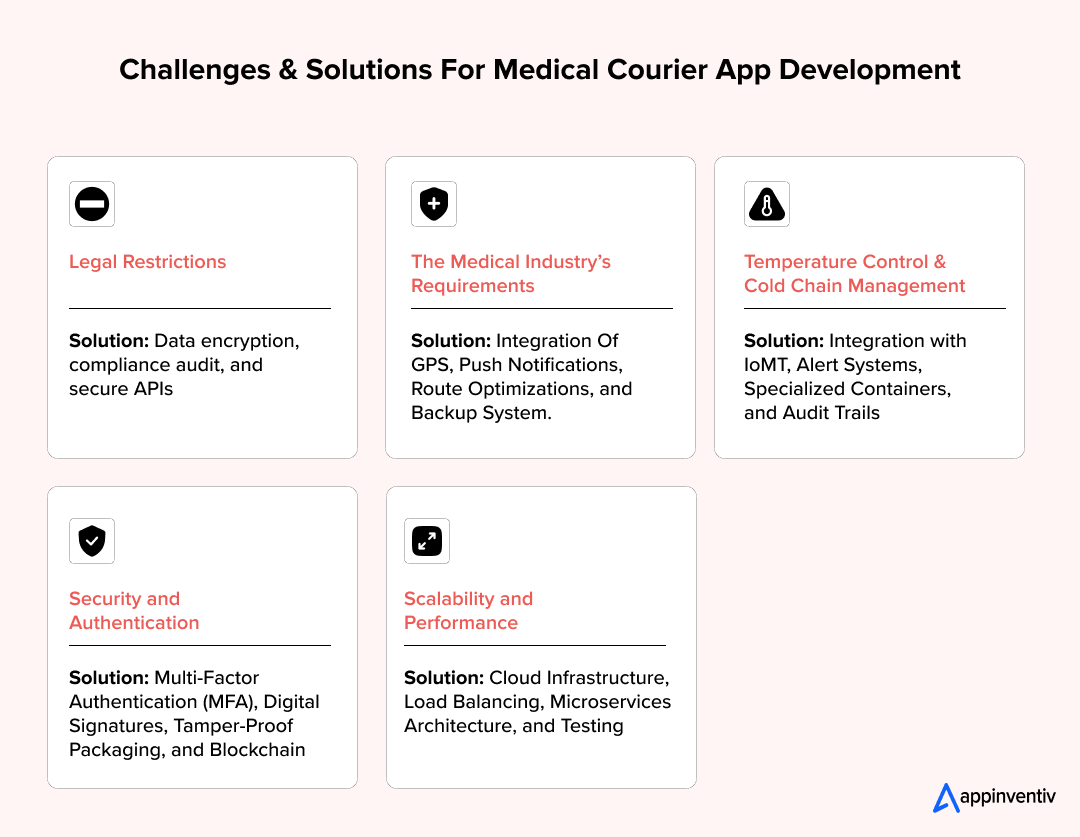 Legal Restriction
Legal Restriction
Challenge:
HIPAA in the US, GDPR in Europe, or local laws for healthcare regions impose regulations safeguarding crucial patient information. Corpus medical data includes items like drugs and specimens, which are sensitive goods. Trust is fundamental to compliance; remaining neutral safeguards can damage reputation.
Solution:
- Data Encryption: End-to-end encryption ensures that only the sender and intended recipient of the message can read its contents. This applies to both transferring and storage needs.
- Compliance Audit: Collaborate with a legal specialist to confirm adherence to the law and policies. This is not a one-time activity; regular business operations or audits should be conducted. Maintain due diligence of laws and modernize the policies used.
- Secure APIs: Third-party APIs, such as cloud-saved stair IP payment gateways stored in a HIPAA-consenting manner, should be employed.
Bonus Read: HIPAA Compliant App Development: A Complete Guide
The Medical Industry’s Requirements
Challenge:
Medical professionals depend on timely deliveries of life-saving items such as organs, blood, or medications. Accurate tracking and precision in temporal measurements are necessary.
Solution:
- Integration Of GPS: Since couriers are a primary part of deliveries, there needs to be high accuracy GPS and geofencing for real time.
- Push Notifications: Precise alerts need to be implemented so that any issues pertaining to delays, updates, or changes can be aptly accounted for.
- Route Optimization: Algorithms driven by AI can dynamically add by calculating the fastest and safest routes while tracking for any potential hurdles that can be added from traffic and weather.
- Backup System: Counteracting offline tracking abilities and redundant systems from network failures.
Temperature Control and Cold Chain Management
Challenge:
Many medical items, such as vaccines and biologics, require extreme temperatures to be controlled during transport. Without maintaining the cold chain, products can easily be rendered useless.
Solution:
- Integration with IoMT: Healthcare leveraging IoMT to revolutionize their ops including medical supplies delivery. Thus, you can use IoT sensors by injecting them into vehicles so that temperature, humidity, and other environmental factors can be monitored in real time.
- Alert Systems: Sensitive temperature control places need reliable alerts for any automated actions that go beyond set limits, so that prompt action can be enabled.
- Specialized Containers: Use validated, insulated containers with cooling systems for extremely sensitive items that require added protect.
- Audit Trails: Per compliance and quality assurance guidelines, complete temperature data and related infomation need to be logged without gaps.
Security and Authentication
Challenge:
The sensitive nature of medical deliveries contributes to their value. That makes them targets for theft. Authorization breaches are some of the critical issues needing attention.
Solutions:
- Multi-Factor Authentication (MFA): Admins, couriers, and recipients require MFA system to access the app.
- Digital Signatures: Handoff deliveries using e-signatures and biometrics for identification.
- Tamper-Proof Packaging: Use seal-proof is tracking-proof packaging.
- Blockchain: It could be considered for keeping uneditable records of delivery transactions to improve security and traceability within systems.
Scalability and Performance
Challenge:
The app should optimally perform at an increase in users, deliveries, data, and interactivity without decline in speed, reliability, or prolonged response time during peak hours like pandemics.
Solutions:
- Cloud Infrastructure: Prepare your application to function elastically using AWS, Azure, or Google Cloud by adopting cloud infrastructure to manage massive concurrent user traffic spikes.
- Load Balancing: Implement load balancers to streamline traffic across the servers to improve performance.
- Microservices Architecture: Split the app into smaller units called microservices architecture for easier scaling and maintenance.
- Testing: Regularly assess the system under high-load scenarios to find and resolve bottlenecks.
Why Choose Appinventiv to Build Your Custom Medical Courier App?
To make a medical courier app, you require more than good technology—demand compliance, security, and efficiency. Being a renowned healthcare app development company, we at Appinventiv specialize in delivering bespoke healthcare app development solutions that meet industry standards while delivering a seamless user experience.
- Extensive Experience: With 3,000+ successful projects, we know what it takes to build impactful healthcare apps.
- Expert Team: Our 1,600+ professionals work closely with you to develop a seamless and regulation-compliant platform.
- End-to-End Services: We handle everything from planning and design to development, launch, and ongoing support.
- Proven Success: The Times Business Awards recognized us as the ‘Tech Company of the Year’, and we bring innovation and reliability to every project.
FAQs
Q. How to build a medical courier app that ensures data security?
A. To safeguard sensitive patient and delivery information, implement end-to-end encryption, secure login features, and data protection protocols compliant with HIPAA and GDPR standards.
Q. What is the cost of developing a medical courier app?
A. On-demand Medical courier app development cost varies depending on app complexity, features, and platform. On average, the development can range from $40,000 to $500,000, with additional maintenance and updates required post-launch.
Q. Can the app integrate with existing hospital management systems (HMS)?
A. Yes, you can make a medical courier app that can be integrated with HMS using APIs. This would enable seamless coordination between healthcare providers and courier services to track orders and delivery status efficiently.
Q. What is the impact of medical courier apps in healthcare logistics?
A. Create a medical courier app to enhance healthcare logistics by streamlining deliveries, improving real-time tracking, ensuring secure handling, and optimizing routes. They reduce delays, maintain compliance with regulations, and improve patient outcomes by enabling faster, safer transport of critical medical supplies and samples.
Q. Which technology is best for developing a medical courier app?
A. The best technology stack to create a medical courier app depends on requirements, but a robust and scalable combination includes:
- Frontend: React Native or Flutter for cross-platform mobile apps (iOS/Android) with fast UI and real-time updates.
- Backend: Node.js with Express or Python (Django/Flask) for scalable APIs and real-time data processing.
- Database: PostgreSQL for structured data or MongoDB for flexibility with unstructured data.
- Cloud: AWS or Google Cloud for secure storage, scalability, and compliance with HIPAA regulations.
- Security: OAuth 2.0, JWT for authentication, and end-to-end encryption for data protection.
Q. What are the best practices for managing medical deliveries in remote areas?
A. Incorporate offline capabilities, GPS tracking, and emergency alert features to ensure reliable service in areas with limited connectivity.


- In just 2 mins you will get a response
- Your idea is 100% protected by our Non Disclosure Agreement.
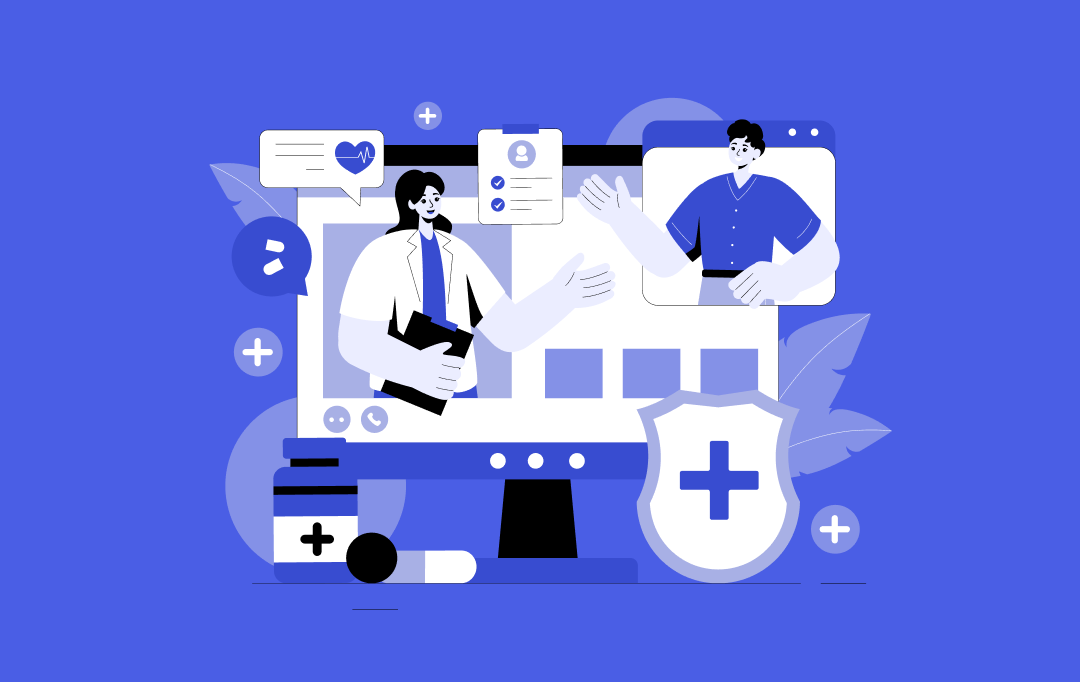
Identity and Access Management in Healthcare: Core Components, Challenges, and Best Practices
Key Takeaways Healthcare runs on trust, and Identity and Access Management is what keeps that trust intact by protecting every login, record, and device. A modern IAM system does more than secure passwords, it connects people, systems, and data safely across hospitals and clinics. AI and automation are changing how IAM works, spotting risks faster…

How Telemedicine is Breaking Barriers in Mental Health Care Access and Delivery
Key Takeaways Telemedicine is helping healthcare systems close gaps caused by clinician shortages, long wait times, and limited physical infrastructure. Virtual mental health care boosts access beyond geographical barriers while reducing no-shows, travel barriers, and scheduling conflicts. Hybrid models, remote monitoring, and AI-supported assessments make care more continuous, proactive, and scalable. Partner with Appinventiv to…
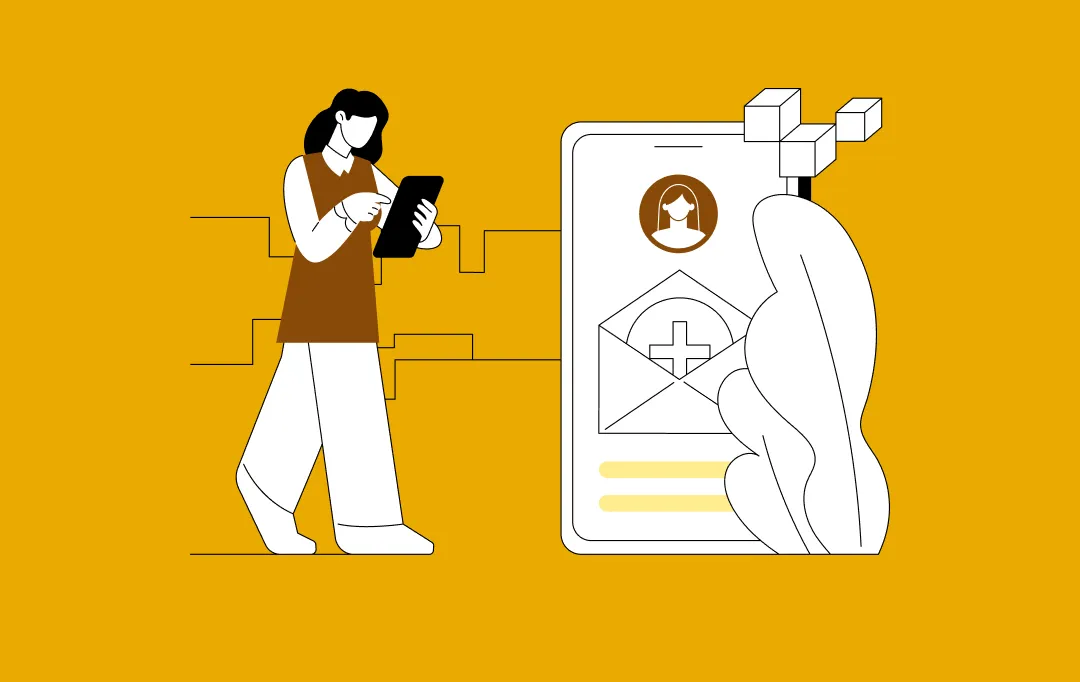
Chiropractor App Development: Complete Guide for Clinics
Key Takeaways Chiropractor apps succeed when they solve real clinic workflows, not just scheduling and bookings. Choosing the right app type early prevents data silos, rework, and scalability issues later. MVP-first development helps clinics validate adoption before investing in full platforms. Compliance, integrations, and analytics must be built in from day one, not added later.…


